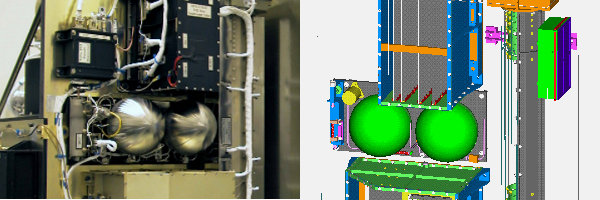
COSAC - Cometary Sampling and Composition Experiment
COSAC is one of two gas analyzers on board the lander Philae.
Science Objectives:
The instrument is designed to identify organic compounds in the material from the nucleus of comet 67/P Churyumov-Gerasimenko.
A large part of cometary material consists of organic matter (i.e. carbonic compounds) and water. At the time when the Earth was formed, the planet was most likely much too hot to bind such volatile molecules. It is therefore probable that at least part of the materials that were decisive for Earth’s chemical and biological evolution were carried to Earth much later by comets. These very old bodies therefore play a decisive role in the development of life.
COSAC is destined to obtain information on the composition of volatile compounds from the comet’s nucleus and thus contribute to a deeper understanding of the history of life.
Instrument:

COSAC consists of a gas chromatograph (GC) and a time-of-flight mass spectrometer (TOF-MS) as well as the necessary auxiliary systems to operate both. Soil samples are filled into ovens with the help of a drill. These ovens are then sealed and heated. The gas that is created in this way is then delivered to the CG, the MS, and a combination of both for measurements.
COSAC was developed and built under the leadership of the Max Planck Institute for Solar System Research. Partners are the das Laboratoire Inter-universitaire des Systèmes Atmosphériques (Paris), the Laboratoire Atmosphères, Milieux, Observations Spatiales (Paris), and the University of Gießen.
